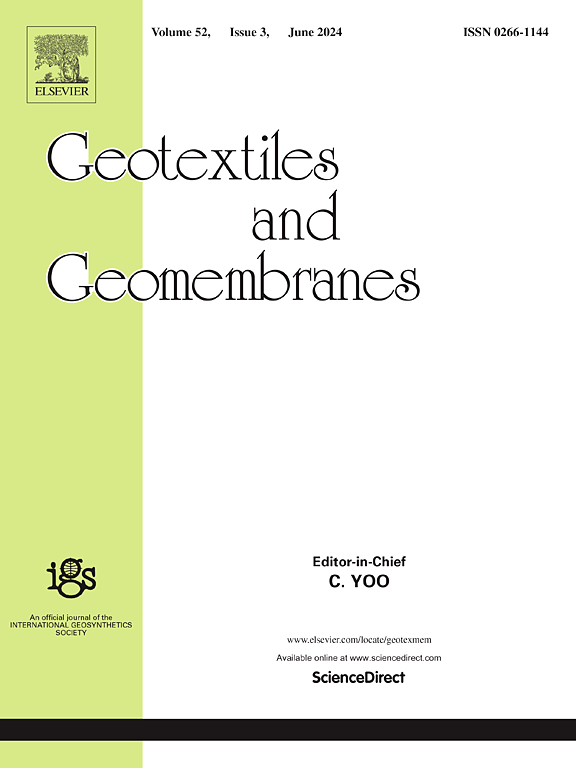Investigation of soil arching in GRPS embankments under localized loading: Multi-span spring-based trapdoor model test
Abstract
A novel multi-span spring-based trapdoor apparatus has been developed to simulate more realistically the coupling of piles, soft soil, and geosynthetics, as well as the intricate interactions between adjacent soil arches under localized loading within geo-reinforced pile-supported (GRPS) embankments. By employing movable blocks with varying spring stiffnesses, this study advances the understanding of the coupling effect between piles, soft soil, and geosynthetics. Utilizing digital image correlation (DIC) technology, the research captures the dynamic evolution of soil arch shapes, providing new insights into stabilization mechanisms within GRPS embankments. It is found that lateral geosynthetics can effectively reduce the overall settlement of the embankment and mitigate the influence of trapdoor stiffness on the soil arch height. The geo-reinforcement enhances the stability of soil arches under localized loading by providing essential support to the arch feet of multiple internal soil arches. Four distinct stages in soil arch evolution under localized loading have been identified. The relationship between geo-reinforcement stiffness and trapdoor stiffness in affecting soil arching is complex and varies with different loading scenarios. The membrane effect plays a pivotal role in inter-span load transfer.

 求助内容:
求助内容: 应助结果提醒方式:
应助结果提醒方式:


